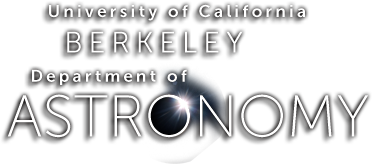Archive:Aileen Serrano
- More
Astronomers thought they understood fast radio bursts. A recent one calls that into question.
January 22, 2025
A third outrigger radio array will go online this week at Hat Creek Observatory, a facility in Northern California formerly owned and operated by UC Berkeley and now managed by the SETI Institute in Mountain View. Together, the four arrays will immensely improve CHIME’s ability to precisely locate FRBs. “When paired with the three outriggers, we should be able to accurately pinpoint one FRB a day to its galaxy, which is substantial,” UC Berkeley Astronomer Calvin Leung said. “That’s 20 times better than CHIME, with two outrigger arrays.” “CHIME and its outrigger telescopes will let us do astrometry at a…
- More
The Hubble Space Telescope completes a high-resolution portrait of our galaxy’s gorgeous neighbor
January 16, 2025
It may be a “train wreck,” in the words of UC Berkeley astronomer Dan Weisz, but it’s a beautiful train wreck. A mosaic image of the entire Andromeda galaxy (Messier 31, or M31), 2.5 million light years away but six times larger than the moon in the night sky, was released today (Jan. 16) by the Space Telescope Science Institute in Maryland. The galaxy’s brilliant yellow center is surrounded by an ethereal blue luminescence, the stars like grains of sand on a beach. What it reveals, Weisz says, is that the galaxy has collided with another galaxy over the past…
- More
Raffaella Margutti Awarded the Presidential Early Career Award for Scientists and Engineers
January 16, 2025
Congratulations to Professor Raffaella Margutti on receiving the Presidential Early Career Award for Scientists and Engineers (PECASE), the highest honor bestowed by the U.S. government on outstanding scientists and engineers early in their careers. Established by President Clinton in 1996, PECASE recognizes scientists and engineers who show exceptional potential for leadership early in their research careers. The award recognizes innovative and far-reaching developments in science and technology, expands awareness of careers in science and engineering, recognizes the scientific missions of participating agencies, enhances connections between research and impacts on society, and highlights the importance of science and technology for our nation’s future.…
- More
2024 TOP AWARD WINNER – Sanjana Curtis
October 25, 2024
Sanjana Curtis is an NSF Astronomy and Astrophysics Postdoctoral Fellow at UC Berkeley. Her research focuses on some of the most extreme phenomena in the universe, such as the explosive deaths of stars and mergers involving neutron stars and black holes. Many of the elements that make up our bodies and our world were forged in these cosmic cataclysms, and Sanjana is working to uncover their origin stories. She loves to share these stories, as well as her passion for research and discovery, through her writing, TikTok videos, and public lectures. She firmly believes that science is for everyone. Read…
- More
UC Berkeley Astronomy Major and Alumni Awarded 2024 MacArthur ‘Genius’ Fellowship
October 14, 2024
The MacArthur Foundation announced the Class of 2024 MacArthur Fellows on Tuesday, October 1. MacArthur Fellowships, often called ‘genius grants,’ provide each recipient with an $800,000 stipend, a “no-strings-attached award to extraordinarily talented and creative individuals as an investment in their potential,” according to the MacArthur Foundation website. Of the five University of California alums selected this year, two are graduates of UC Berkeley’s College of Letters & Science: Ruha Benjamin and Keivan G. Stassun. Read more
- More
This rocky planet around a white dwarf resembles Earth — 8 billion years from now
September 26, 2024
The discovery of an Earth-like planet 4,000 light years away in the Milky Way galaxy provides a preview of one possible fate for our planet billions of years in the future, when the sun has turned into a white dwarf, and a blasted and frozen Earth has migrated beyond the orbit of Mars. This distant planetary system, identified by University of California, Berkeley, astronomers after observations with the Keck 10-meter telescope in Hawaii, looks very similar to expectations for the sun-Earth system: it consists of a white dwarf about half the mass of the sun and an Earth-size companion in…






